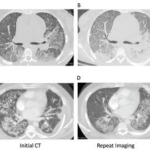There are real problems with the use of templates, algorithms, “cutting and pasting” notes (Is this not a form of clinical plagiarism?) and information, and creating “ipatients,” where the computer record becomes the focus of attention and we neglect the real person in bed who has become “a mere placeholder for the virtual record.”9 Do we pay more attention to the computer and the intricacies of its capabilities than to the patient? Do we become a “Dr. Computer”? Do we really think patients speak in templates?6 Will the rich information from “narrative” medicine be forever lost?
I have found that sometimes in teaching settings I will be presented patients with extensive information, but that information often will be the same as was saved in the electronic or written record on the last visit, and the visit before, and so on. I will hear the “past medical history” and prior impressions, not all always correct. I will hear about the patient, not uncommonly reduced to “positives” and “negatives” (like the wrist was TTP positive or negative, meaning there was or wasn’t tenderness to palpation, not necessarily what structures were identified, with what if any abnormalities, and to what degree), rarely nuanced or qualitative. The most absurd example I can recall was the patient who was “ROMI” positive, meaning he had definitively “ruled out” a myocardial infarction.
In these reports, I will too frequently hear little about the person, how he or she has coped with illness, responded or not to prior and recent treatments, how he or she functioned, what his or her goals and expectations were, and what we could best do to help this person. I will hear about the exam, often carried out without disrobing the patient; and finally I will hear many numbers and other findings, particularly imaging studies, always presented with the authority presumed implicit in quantitative or reported data.
So, I perceive one of my—indeed our—challenges is still to teach students, residents, and fellows what we can about clinical rheumatology and medicine and taking care of sick people in this era of the EMR. I don’t think that an EMR, however fabulous or sophisticated, supplants the need to learn and do good clinical, “bedside” medicine, particularly in rheumatology. I try to remember what I learned as a resident from Eugene A. Stead, Jr., MD, the legendary chair of medicine at Duke University, who said, “Take care of people, not illness … the future of medicine belongs to those… who… in spite of bureaucratic systems, pressures and financial disincentives to spend time with patients continue to care for the patients as human beings.”9,10 We cannot lose sight of the imperative to always thoughtfully perform the ritual of obtaining the “bedside” clinical history and carrying out a careful examination followed by formulation of an informed impression, and then, to paraphrase Verghese, concluded by providing an essential treatment administered by ear—words of support and comfort.8 We must not stop practicing thinking and caring clinical medicine.
And Sunny Southern California…
On a more personal note, I’m still adjusting to certain aspects of my new life in Southern California. Since growing up in Detroit, I’ve mostly lived in college towns (Ann Arbor, Mich.; Durham, N.C.; and Gainesville, Fla.) or pleasant suburbs. Even during fellowship in Boston, we lived in Brookline, and I could walk to the Harvard campus and hospitals; urban living and commuting are new to us. Going to work is now very different. I can’t walk, or run, or bike, like I sometimes used to do. The driving is a big change. The fastest part of my commute in Los Angeles is going out my driveway.
